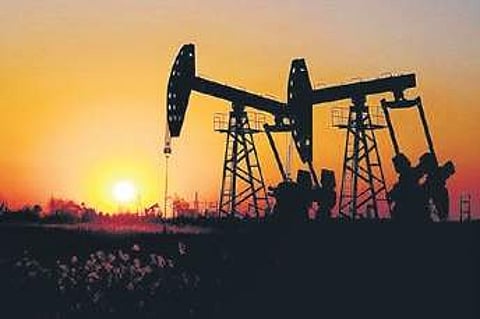

Rising under-recoveries coupled with delays in subsidy payment from the government have deteriorated the liquidity position of the three state-run oil marketing companies: Indian Oil Corporation (IOC), Hindustan Petroleum Corporation Limited (HPCL) and Bharat Petroleum Corporation (BPCL). This has resulted in the maharatnas borrowing from the market at high-interest costs in order to meet working capital and capital expenditure requirements.
As on March 2019, the combined borrowings of the three PSUs stood at a whopping Rs 1.35 lakh crore, up 38.3 per cent from Rs 97,968 crore a year ago, cranking up their debt-to-Ebidta ratio to 2.5 times from 1.7 times in FY18. It may be noted that the last time PSU OMC borrowings breached the one lakh-crore mark was in FY14. However, this was still lower (at Rs 1.32 lakh crore) than debt levels at the end of FY19. Among the three, IOC’s borrowings are the highest, increasing by Rs 27,735 crore to touch Rs 83,260 crore at the end of FY19. This was followed by HPCL and BPCL (see chart). Overall, these three companies piled on Rs 37,611 crore to their overall debt during the last fiscal.
In a recent earnings meet, A K Sharma, whose term as director (finance) at IndianOil ended on May 17, told this publication that the firm’s borrowing have expanded sharply primarily due to pending dues. “Total dues from the government stood at Rs 19,000 crore on account of cooking gas and kerosene subsidy, direct benefit transfer on LPG, and Pradhan Mantri Ujjwala Yojana payouts. At the end of fiscal 2017-18, this was much lower at Rs 9,400 crore,” he pointed out. Besides higher dividend payouts, other IOC executives also said that government departments like defence and railways too haven’t paid around Rs 5,000 crore for the fuel they consumed, further worsening the company’s debt levels. Another factor that pushed up borrowings was the entry tax of Rs 4,000 crore the company paid to the Uttar Pradesh government in 2018-19. Consequently, its debt-equity ratio rose to 0.79 from 0.53 in just a year, Sharma said, adding that this expanded interest costs from Rs 3,483 crore in 2017-18 to Rs 4,311 crore in 2018-19. IOC has also spent nearly Rs 4,500 crore on its buyback programme in FY19.
Meanwhile, M K Surana, chairman, HPCL, said that a large chunk of the amount the firm borrowed in FY19 went into funding planned capital expenditure. The rise in debt, he added, was mainly on account of higher investments in projects and was not a sign of worry for the company. “Our debt-to-equity ratio is quite comfortable, it is not a concern,” Surana pointed out. HPCL’s debt to equity ratio stood at 0.97 in FY19 against 0.88 at the end of FY18. In the case of HPCL too, around Rs 8,000 crore of fuel subsidy dues from the government remain unpaid so far. Meanwhile, the company has already received its shareholders’ approval for raising Rs 12,000 crore in debt, but plans to borrow just about Rs 8,000 crore in the current financial year using a mix of various instruments such as foreign currency bonds and bank loans to fund expansion.
“We also foresee net profit margins coming under pressure because of higher interest costs. OMCs have had to contract 22 per cent more short-term debt last fiscal because of inadequate payments from the government, and also to service under-recoveries of the recent past,” Crisil Research Senior Director Prasad Koparkar said. Last fiscal year, under-recovery had surged 55 per cent year-on-year to Rs 43,760 crore against Rs 24,830 crore budgeted by the government. The difference of Rs 18,900 crore was rolled over to this fiscal adding up to a total of Rs 56,400 crore that the government has to pay towards subsidy for under-recoveries.
Furthermore, the US sanctions on Iran and Venezuela, and OPEC production cuts by are expected to keep crude oil prices firm at $70 per barrel and cause high volatility.
Higher crude oil prices would, in turn, increase under-recovery on account of liquid petroleum gas and superior kerosene oil to as much as Rs 37,000-39,000 crore this fiscal year, Koparkar added.